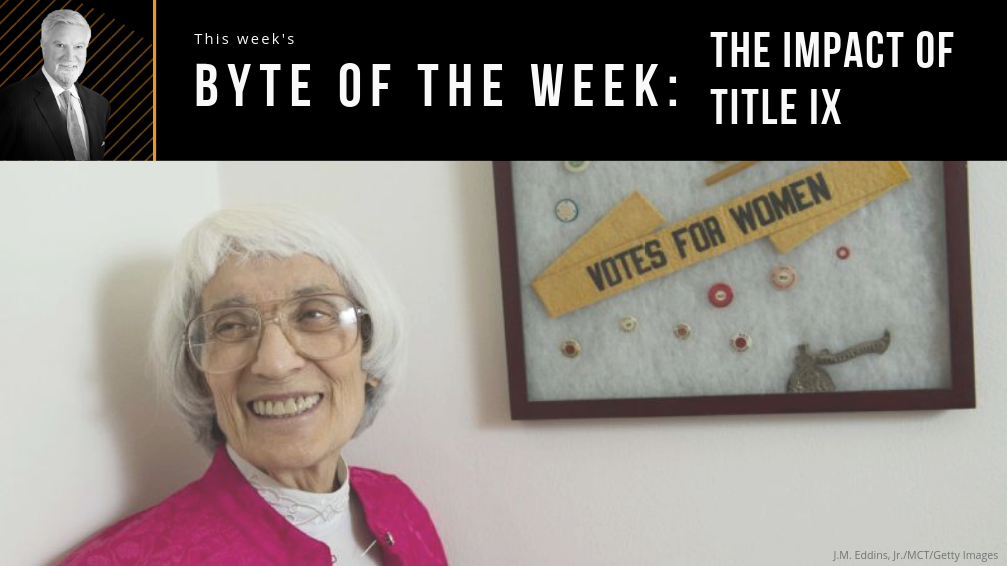The godmother of Title IX, Dr. Bernice Sandler, passed away earlier this month. Dr. Sandler was the driving force behind the creation of this groundbreaking law that changed the landscape of higher education.
Access to athletics is the most widely known impact of Title IX. Fewer than 300,000 girls played high school sports in 1974 — today, that number has grown to more than 3.1 million.
Before Title IX, athletic scholarships for women were virtually nonexistent because few women were involved with sports. Now, there are millions in scholarships given to women at Division I schools.
Of the 55,000 student-athletes competing at LEAD1 schools, over half — 52 percent (28,600) — are female.
Furthermore, greater opportunities to play sports lead to greater female participation in previously male-dominated occupations, including careers in science, technology, and politics.
Senator Kirsten Gillibrand recently entered the field of 2020 presidential contenders. The New York senator was a squash player at Dartmouth and co-captained the team during her senior year — all because of Title IX.
More women in leadership positions is one of the many benefits of Title IX.
We are grateful for Dr. Sandler and others who helped create opportunities for millions of women—especially student-athletes—at colleges and universities across the country.






